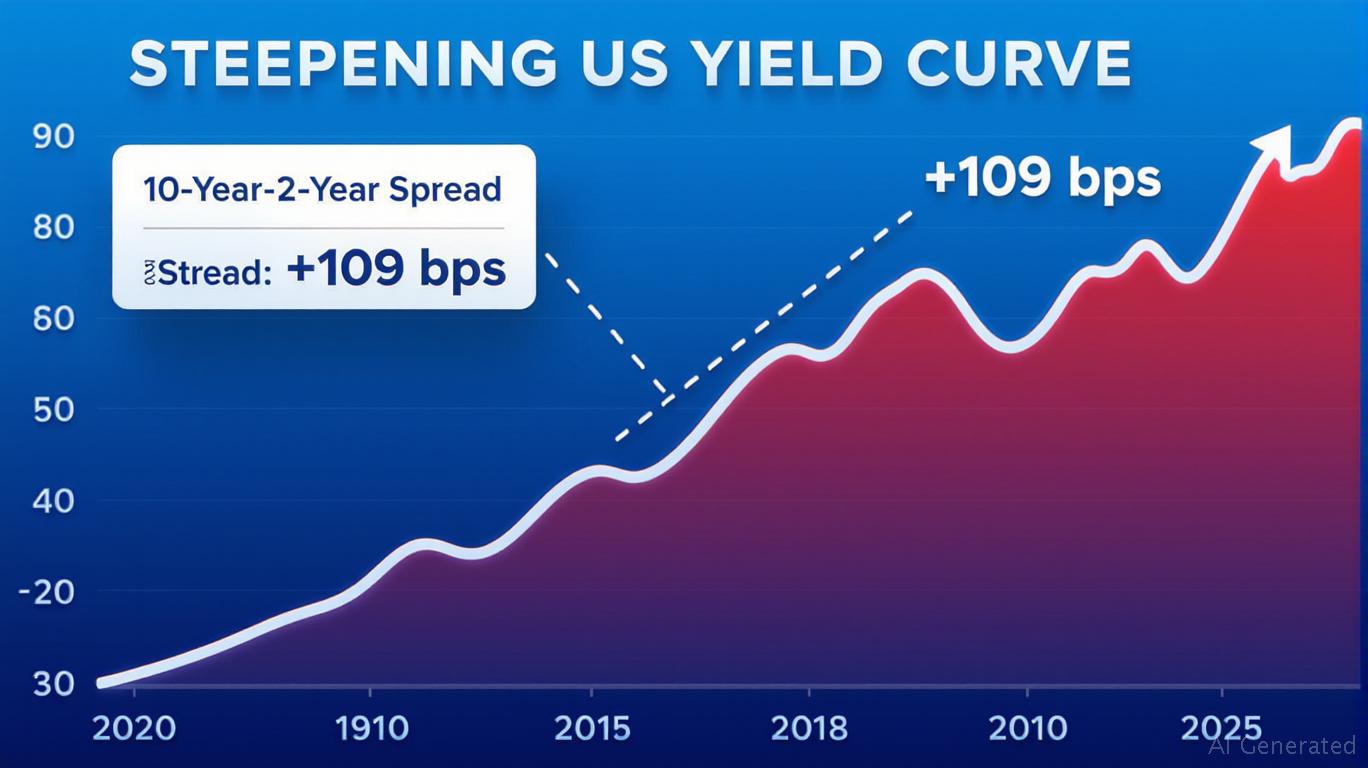Sector Rotation Strategies: Capitalizing on Cyclical Recovery in a Post-Inversion Yield Curve
The yield curve's normalization in June 2025 marks a pivotal shift for investors. After nearly three years of inversion—a condition historically signaling recession risks—the 10-year Treasury yield now sits above the 2-year rate by 109 basis points, signaling a “higher for longer” rate environment and a potential soft landing for the economy. For sector rotation strategies, this presents a unique opportunity to pivot toward undervalued cyclical sectors poised to rebound as Federal Reserve rate cuts materialize.

Why Sector Rotation Matters Now
The end of the inverted yield curve reduces immediate recession fears but leaves investors in a “wait-and-see” environment. The Federal Reserve's cautious stance—projecting two rate cuts by year-end 2025—suggests that monetary policy will remain restrictive until inflation is fully tamed. This creates a window to rotate into cyclical sectors that have been lagging during the rate-hike cycle but could thrive as borrowing costs stabilize or decline.
Key Cyclical Sectors to Watch
1. Financials (XLF): Benefiting from Steeper Curves
Financial institutions, particularly banks and insurers, are sensitive to the yield curve's slope. A steepening curve (long-term rates rising relative to short-term rates) expands net interest margins, boosting profitability. The Financial Select Sector SPDR Fund (XLF) currently trades at a price-to-book ratio of 1.2x, below its five-year average of 1.5x, despite the Fed's “higher for longer” stance. Historically, buying
2. Industrials (XLI): Infrastructure and Manufacturing Tailwinds
Industrials, including aerospace, machinery, and logistics firms, are cyclical darlings during economic recoveries. With the Fed's projected rate cuts and a resilient labor market (4.1% unemployment as of June), demand for industrial goods could surge. The Industrial Select Sector SPDR Fund (XLI) has a forward P/E of 18x, lower than its five-year average of 22x, offering room for upside if earnings estimates improve. Historical data shows XLI delivered an average return of 10.75% following rate cuts since 2010, though with a higher volatility profile (max drawdown of -16.2%).
3. Consumer Discretionary (XLY): Reopening the Spending Tap
Consumer discretionary stocks—ranging from automakers to retailers—lagged during the high-rate environment but could rebound as borrowing costs ease. Lower mortgage rates (projected to fall to 5.0% by 2028) and a potential boost to disposable income could lift sectors like travel, auto sales, and luxury goods. The Consumer Discretionary Select Sector SPDR Fund (XLY) trades at a forward P/E of 19x, below its 23x five-year average, suggesting undervaluation. Backtested performance shows
Valuation Metrics Highlight Undervaluation
Cyclical sectors are currently trading at discounts relative to their historical averages, partly due to lingering inflation concerns and geopolitical risks like tariffs. However, the Fed's projected rate cuts through 2027—reducing the federal funds rate to 2.25%-2.50% by 2027—could alleviate these pressures. Key metrics to watch:
- Financials: P/B ratio, net interest margin trends.
- Industrials: P/E ratio relative to GDP growth forecasts.
- Consumer Discretionary: P/E relative to consumer confidence indices.
Risks to Consider
- Inflation Persistence: If core inflation (currently at 2.8%) rebounds above 3%, the Fed may delay cuts, prolonging the “higher for longer” environment.
- Labor Market Cooling: A sudden rise in unemployment could signal weaker demand for cyclical goods.
- Geopolitical Tensions: Tariffs or trade disputes could disrupt supply chains and corporate margins.
Actionable Investment Advice
- Overweight Financials: Use ETFs like XLF or individual names with strong balance sheets (e.g., , Bank of America) to capitalize on margin expansion. Historical performance shows XLF delivered a 12.5% average return post-rate cuts, though investors should brace for volatility.
- Dip Buying in Industrials: Look for entry points in industrials tied to infrastructure spending (e.g., , 3M) as rate cuts lower project financing costs. XLI's 10.75% average return post-rate cuts supports this strategy, though its higher drawdown (-16.2%) underscores the need for caution.
- Rotate into Consumer Discretionary: Focus on companies with pricing power and exposure to travel/luxury (e.g., LVMH, Corp) as consumer sentiment improves. XLY's superior risk-adjusted returns (Sharpe ratio of 0.44) and 14.57% average gains make it a compelling pick.
Conclusion
The yield curve's normalization in 2025 offers a clear signal to pivot toward cyclical sectors. By targeting undervalued industries like financials, industrials, and consumer discretionary, investors can position themselves to capture gains as Fed rate cuts materialize. However, discipline remains key—monitor macro indicators closely and avoid overextending in sectors that remain vulnerable to inflation or geopolitical shocks.
Investors who act now, balancing optimism with caution, may find the next leg of this recovery story in the very sectors that have been left behind.

Comments
No comments yet